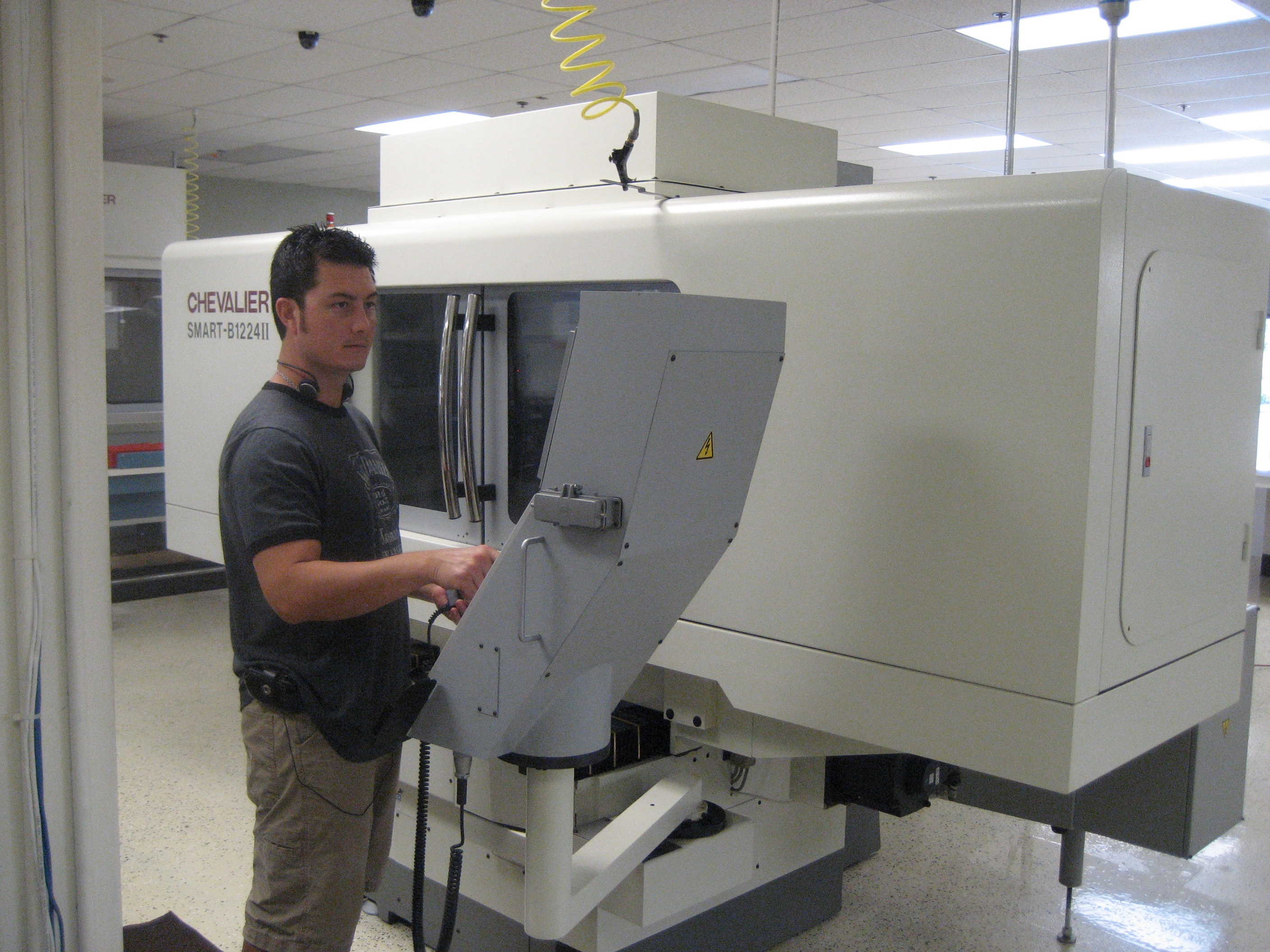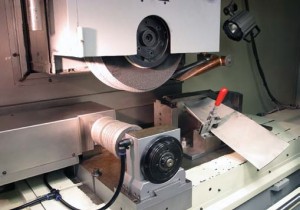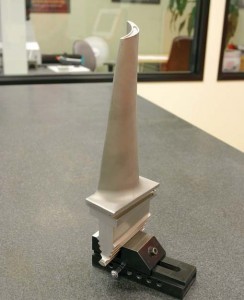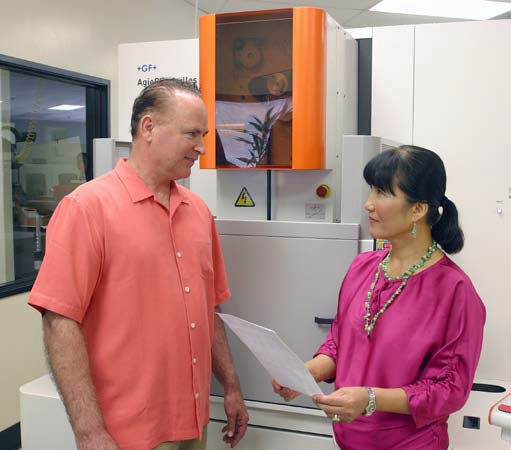High-Density Fixturing

Success Secrets
November 30, 2015
Fixturing Expertise Helped Growth
November 30, 2015Marlon and Julia Gaines discuss time schedules for producing certain features on a turbine blade.

Rotary diamond dresser dresses the grinding wheel, which will
profile grind a row 4 turbine blade. The grinding wheel on the
Chevalier has 4.75†wide capability.
Before taking the plunge into his own business, Gaines - a graduate manufacturing engineer - spent 28 years as a tool maker and designer for creep-feed profile grinding houses. During that time, he developed techniques for producing what he calls high-density fixturng. At the same time, he became well known throughout the industry for his fixturing expertise.
“A lot of grinders are still locked into using a clamping system or a low melting point matrix,†he says. “They hold the blades on these pins and encapsulate them with low melting point metal which means they have a square blob around the air foil. That, in turn, means there’s a lot of air between the parts, which is a very old and inefficient method, but amazingly some people still believe that’s the only way to do it. The problem with that is that production efficiency is greatly reduced. At Leading Edge, we use very high density fixturing with virtually zero air between parts. With high density fixtures I can grind ten to thirty parts in one setup, depending on part size, and, of course, be extremely competitive.â€

Row 3 ground-based gas combustion turbine blade produced
by Leading Edge using a a combination of Charmilles wire edm
and Chevalier profile grinders.


